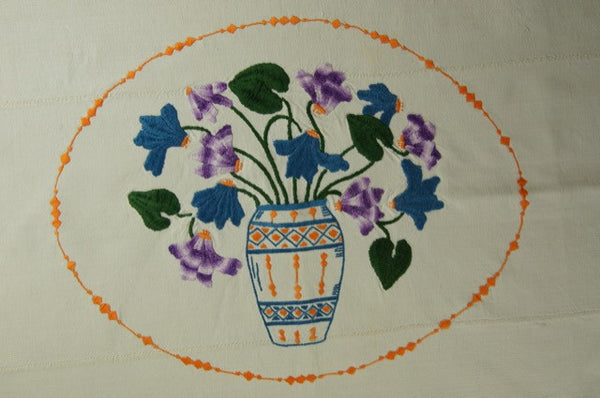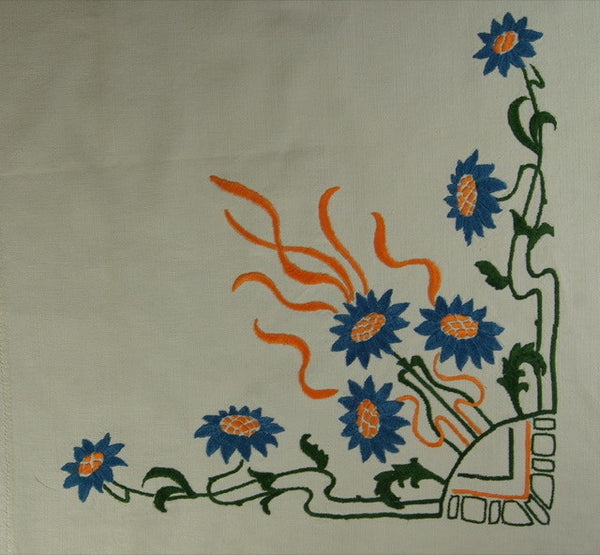This 56" x 49" hand-loomed linen tablecloth is hemstitched on two ends and embroidered to celebrate the fall harvest. The padded satin stitch showcases fall flowers in brilliant detail. It’s as if they are being gently buffeted by the wind as they spring from the vase in the center of the cloth.
Fall Harvest Satin Stitch Tablecloth
Flowers were and are ubiquitous symbols of beauty for stitchers historically and today. Nothing brightens an interior more than the bright floral patterns on so many of our vintage and antique embroidered pieces.
See Our Antique Textiles in Person
This is but one of many luxurious one-of-a-kind antiques we have in our Pensacola atelier, as we have row upon row of textiles that include everything from antique French heirloom linens and primitive Austro-Hungarian Empire textiles to Art Deco and Bohemian specimens—at last count two million one-of-a-kind linens of the finest quality.
If you see a beautiful specimen on this site that you would like to see in person and you cannot visit us but you are a regular at either Round Top or the High Point Market, we will happily bring it to one of these shows so you can see for yourself how remarkable it is. See our Calendar of Events page for fair dates and let us know if we can bring our sumptuousness to you.
Satin Stitch from the Past
Did you know that samples of Zhou Dynasty era embroidery from between 1045 and 246 BC have survived the tests of time? Among these is an embroidered silk gauze garment from the Warring States period (9475 to 221 BC) that included satin stitch and chain stitch embroidery. These are the first stitches an embroider normally learns, and these particular hallmark stitches were worked in silk thread.
In 1544, an excavation in Ur, Sumer, now known as Iraq, unearthed a woven shroud ornamented with embroidery in pure gold thread. This specimen, dating back to 400 A.D., proved how highly embroidery was regarded given the precious metal the thread was made from. In cultures spanning from Persia and India to China and Japan, as well as from Greece to medieval and Baroque European countries, embroidery has been used to ornament clothing, religious objects and home décor to symbolize prestige and wealth through the ages.


